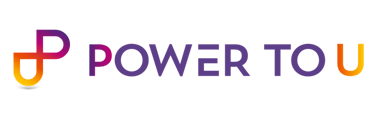STRATEGIC PROCESS OPTIMISATION AND DESIGNING & IMPLEMENTING PERFORMANCE MANAGEMENT SYSTEM
Transforming a Growing Waste Management Company through Process Optimization and Performance Management
2/17/20253 min read


Transforming a Growing Waste Management Company through Process Optimization and Performance Management
1 Executive Summary
A fast-growing company in the sustainable waste management industry was experiencing inefficiencies due to the lack of structured processes, a defined performance management system, and underutilization of internal technology. The company also faced cultural rigidity that led to employee disengagement and rising operational costs.
Through a comprehensive consulting intervention, the company optimized workflows, implemented a performance management framework, integrated technology for better monitoring, and transformed its work culture. Within eight to nine months, these changes resulted in a 4%–5% cost reduction, a 12%–14% drop in attrition, and a 6%–7% increase in productivity.
This case study explores the strategic importance of structured operational improvements and performance alignment in scaling organizations within emerging industries.
2 Company Background
The client operates in the sustainable waste management industry, providing waste collection, segregation, and recycling services. The company, led by hands-on owners and directors, was experiencing rapid growth but lacked formalized processes and performance tracking mechanisms. The absence of structured systems hindered efficiency, profitability, and employee morale.
With increasing competition and sustainability regulations, the company needed to enhance its operational and human resource capabilities to maintain its growth trajectory and solidify its market position.
3 Challenges & Business Dilemma
Several organizational inefficiencies threatened scalability and profitability:
Process Standardisation: Workflows were inconsistent across departments, leading to operational delays.
Performance Tracking Mechanism: The absence of key performance indicators (KPIs) meant that productivity and efficiency were not effectively measured.
Utilization of Internal Technology: Existing technology resources were not leveraged to optimize operations.
Rigid Work Culture: A lack of employee recognition and a serious, hierarchical environment led to disengagement.
Rising Costs & High Attrition: Without structured performance monitoring and employee engagement initiatives, operational expenses and staff turnover increased.
4 Consulting Approach & Interventions
To address these challenges, a multi-pronged approach was implemented:
Process Optimization
Conducted an in-depth industry and internal workflow analysis.
Standardized processes across departments to reduce inefficiencies and enhance accountability.
Performance Management Implementation
Designed a structured performance management framework tailored to the company’s business goals.
Developed role-specific KPIs to track employee contributions objectively.
Introduced daily and weekly monitoring mechanisms to improve real-time decision-making.
Implemented a feedback-driven performance review system for continuous improvement.
Technology Integration
Engaged the internal technology team to enhance digital tracking of performance metrics and operations.
Developed automated reporting mechanisms to streamline data collection and improve accuracy.
Utilized analytics to forecast operational trends and make proactive business decisions.
Cultural Transformation
Shifted the work culture from rigid and hierarchical to inclusive and engaging.
Introduced employee recognition programs to incentivize high performance.
Developed an open feedback culture to improve communication between management and staff.
5 Results & Business Impact
Within eight to nine months of implementing these interventions, the company achieved measurable improvements:
Cost Reduction: 4%–5% decrease in operational costs due to process efficiencies.
Lower Attrition: 12%–14% reduction in key staff turnover following cultural and performance management initiatives.
Productivity Increase: 6%–7% improvement in production output through structured KPI monitoring and technology integration.
Improved Employee Engagement: Higher morale and motivation due to recognition programs and an inclusive work culture.
6 Key Takeaways & Lessons for Business Leaders
Process Optimization Is a Growth Enabler: Streamlined operations directly impact cost savings and efficiency.
Performance Management Drives Accountability: Clear KPIs and structured reviews lead to a more productive workforce.
Technology Must Be Fully Utilized: Digital tools enhance monitoring, reporting, and decision-making capabilities.
Culture Shapes Business Success: Employee recognition and engagement reduce attrition and improve overall company performance.
7 Discussion Questions (For Case-Based Learning)
What were the primary factors contributing to the company’s initial inefficiencies?
How can organizations balance technology integration with human resource optimization?
What cultural shifts are necessary to sustain operational improvements over time?
What strategies can similar companies adopt to enhance scalability and competitiveness?
Conclusion
This case study highlights how strategic process optimization, structured performance management, and cultural transformation can drive growth and sustainability in a fast-growing company. Organizations in emerging industries can replicate these strategies to enhance efficiency, employee satisfaction, and overall business performance.
Meesala Solutions Pvt Ltd.
#D3903 9th floor, Ozone Greens, Medavakkam, Tambaram, Chennai - 600100
+91 9962033000


